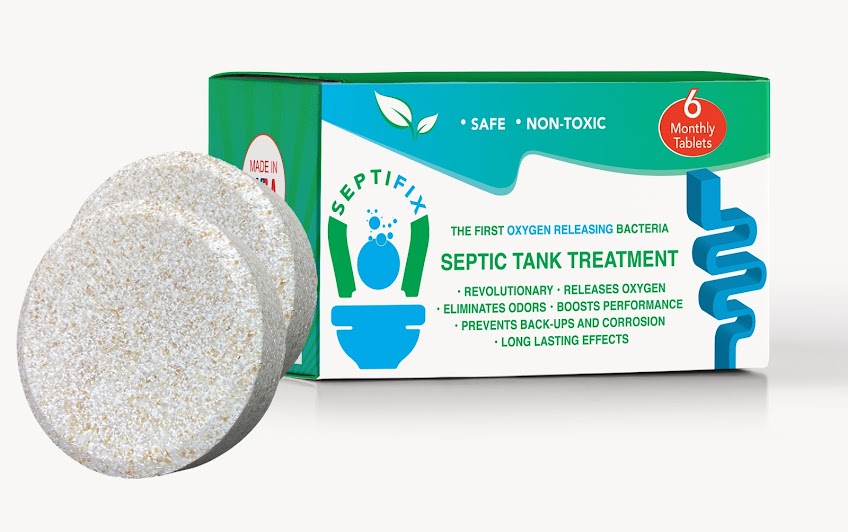Why You Have Two Septic Tanks
Your home or building facility may either have an on-site wastewater management systems (your septic system) or you are connected to your municipality’s sewer system. All property owners are served best to know if their property has a dedicated septic system or otherwise. And if you do find out that your home or building is operating on an on-site septic system, you might also find that you have two septic tanks.
Why do you have two septic tanks? The bigger of the two tanks (or compartments) is for blackwater and the smaller one, for greywater. Blackwater is the mixture of urine, fecal matter and flushwater. It is highly pathogenic, with feces and urine that are diluted in the flushwater. On the other hand, water coming from domestic equipment other than toilets (such as bathtubs, showers, sinks, and washing machines) is referred to as greywater. The purpose of having a separate greywater system is to relieve some pressure off of the whole septic or sewer system.

A typical household septic tank is made up of two round tanks made of concrete with lids next to each other. It is also possible to have one rectangular septic tank divided into two sections, instead of having two separate tanks. Septic tanks are designed to have a division between two sections, with the first compartment being twice the size of the second. Most of the sludge stays in the first tank or section, while sewage undergoes further treatment to remove residual solid matter in the second tank or section.
In a number of sanitation systems, it is ideal to keep the greywater separate from the blackwater to reduce the amount of water that gets heavily polluted with pathogens. This likewise simplifies the treatment methods for greywater. Blackwater carries pathogens that need to be decomposed before effluent can be released safely into the environment. It becomes difficult to process blackwater if it contains a large volume of excess water. Neither is it processed quickly, due to the high concentrations of organic substances.
Most household septic tank systems, since 1989, have been installed with either two leach drains or two sets of soak wells. These are referred to as alternating systems. Here a diverter mechanism is built into the system which can alter the flow of effluent, also allowing one of the soak wells or one of the leach drains to be shut off at any time. This way, the unused section is allowed to dry out, revitalizing the soil’s ability to process effluent.
How Do Septic Systems Work?
Conventionally, all septic systems include a septic tank, which is typically a large rectangular or cylindrical container made of concrete, fiberglass, or polyethylene. The septic tank is buried underground and wastewater from the property’s plumbing fixtures drains into this receptacle. Heavy solid wastes settle to the bottom where anaerobic bacterial action produces digested sludge and gases. Lighter solid wastes (such as grease, oils, and fats) rise to the top to form a scum layer. The remaining liquid, or effluent, flows from the tanks and into the drainage receptacles to soak into the surrounding soil (the drainfield or leach field) where it may further undergo natural treatment processes. Solids that have not decomposed remain in the septic tank. If these un-decomposed solids are not removed through periodic pumping, they will continue to accumulate, potentially resulting to an overflow into the drainfield. When this happens, the drainfield becomes clogged and could eventually lead to drainfield failure. The first signs of a drainfield failure may be slow drains and foul yard odor. Furthermore, the septic system may fail by discharging sewage effluent directly to the ground or could back-up into the house or building.
Septic system failure generally means failure of its drainage receptacles. Septic failure is most prevalent in older systems built with a single non-alternating drainage receptacle. This particularly happens if large volumes of water is frequently introduced to the system, or if the septic system has not been correctly installed or it has not been maintained adequately through time. In systems that have been used for a long period of time, the soil surrounding the drainage receptacle may be more susceptible to clogging. Effluent is less able to soak unhindered into the surrounding soil and can begin to accumulate in the drainage receptacle until it crosses the threshold.
When this happens, you are faced with these possibilities: sewage could begin to back up into your household or establishment pipes. If this happens, you might notice your plumbing fixtures such as the toilet or kitchen sink not draining efficiently. Or you might notice sewage overflowing through a small grated pipe located outside your facility (this is called the overflow relief disconnector gully). The ground around and within your drainfield area becomes soggy and effluent may be seeping from the soil onto the surface. There will be a noticeably foul odor and this poses a real health risk. In case you observe these issues in your yard or facility perimeter, you should immediately contact your plumber or a drainage contractor for expert assessment.
Septic systems constructed prior to 1975 will typically have single compartment septic tanks. Those built from 1975 and onwards are usually tanks with two compartments. This bit of information is important to know and will be helpful whenever you have you septic tank serviced, as both compartments of this kind of septic tank need to be pumped.
If your house or establishment is more than 40 years old, it is likely that you have two septic tanks. That, or you have just one septic tank with two compartments. Whatever the case may be, there will likely be two lids which you will need to remove and pump from.
How Often Should a Septic Tank Be Pumped?
Be diligent in having your septic tank inspected and pumped routinely, ideally every three to five years. Of course, the frequency of septic tank pumping will depend on the tank size, the amount of solid wastes entering the tank, and the habits of its users. There is only one guaranteed way to ensure that your septic tank system is kept in good running condition and it is to have your septic tank inspected regularly – annually, if possible. The thickness of the sludge and scum layers need to be measured so as to determine when the tank requires pumping. Whenever: the bottom of the scum layer comes within 3 inches of the base of the outlet baffle or when the top of the sludge layer comes within 12 inches of the base of the outlet fitting, you’ll know that the septic tank needs to be pumped.
Another way to look at it is when the level of the combined solid wastes in the septic tank is occupying about 25% of the septic tank’s entire volume, you should have your tank pumped. This has to do with your septic tank’s size and its waste load capacity. Note, however that this can vary depending on the number of occupants in your home or establishment, not to mention their collective personal habits when it comes to washing and toilet use.
If annual inspection is not plausible, remember that your septic tank should be opened and inspected every 3 years, at the very least. This is to make sure that the baffles are all intact and functional. Earlier described measuring of both the sludge and scum layers will indicate if pumping is required whether sooner or later.
Remember that if you remain diligent in regularly and periodically having your septic tank pumped, you are avoiding the most common causes of (highly preventable) septic tank system failure.
Whether you have two septic tanks or one tank with two compartments in your property, regular maintenance of your entire septic system is perhaps one of the best investments you and any home or business owner can make for your properties. Routine and religious maintenance will certainly save you from the inconvenience and worry of very expensive emergency septic system repairs. It is not just for the convenience of functional plumbing – it has to do with everyone’s health and well-being.
https://www.pumper.com/editorial/2010/05/dual-tanks-serve-a-purpose
https://www.healthywa.wa.gov.au/Articles/U_Z/Understanding-Septic-Tank-Systems
https://4reliableseptic.com/faq.htm
https://homeguides.sfgate.com/lid-septic-system-50445.html
https://www.homesteadingtoday.com/threads/why-does-my-septic-tank-have-2-lids.252943/
https://www.epa.gov/septic/how-care-your-septic-system
https://www.sunplumbing.com/how-do-septic-systems-work/











